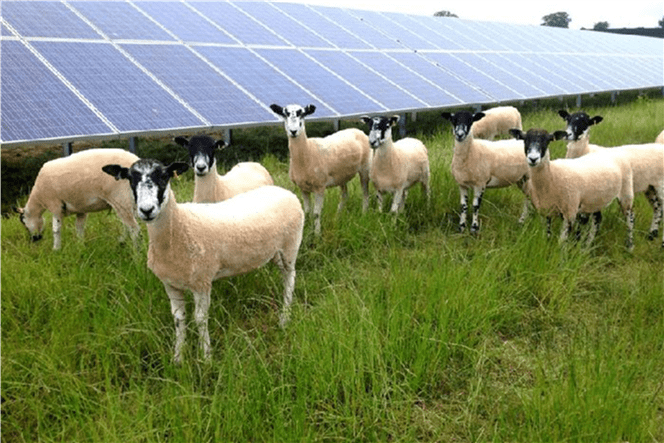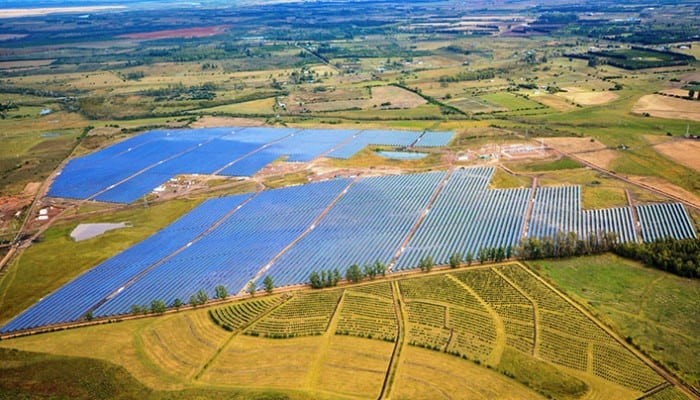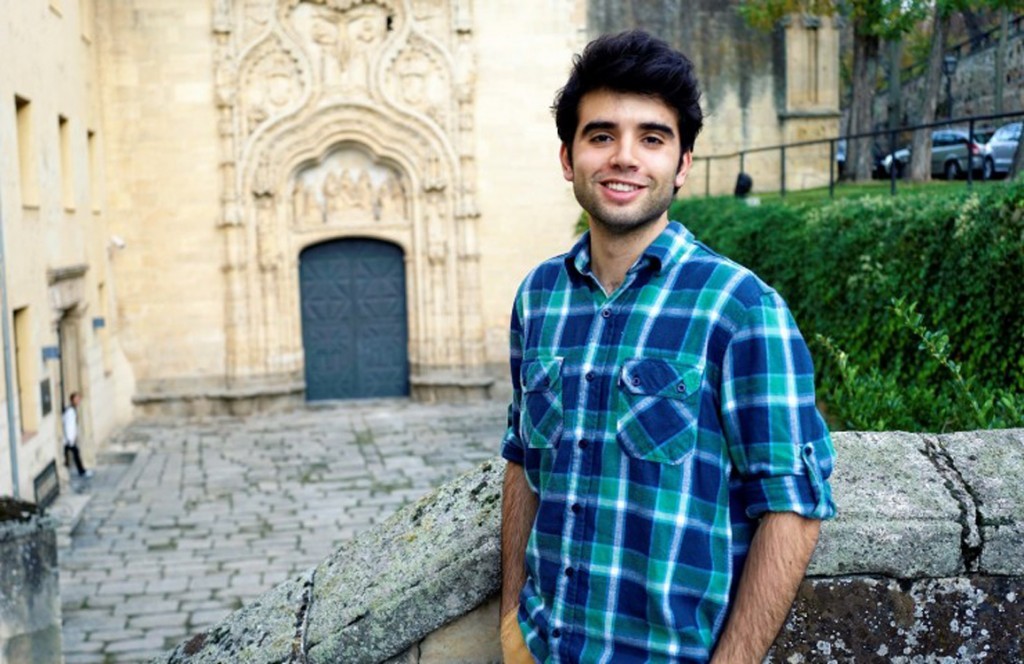Is counting sheep another step towards sustainable energy production?
Solar energy production has gained momentum over recent years, not just a sustainable resource but also in its economic benefits. Solar construction costs decreased 37% between 2013 and 2017. In the first half of 2019, the levelized cost (net present cost over its lifetime) of utility-scale solar dropped a further 18%, while lithium-ion battery energy storage decreased by 35%.[1]
Yet challenges still remain in the operation and maintenance (O&M) of large-scale solar plants. The open space they require often means they occupy land traditionally used for agriculture. Long grass, weeds and other vegetation can all provide unwanted shade, or ‘panel shadowing’ as it is known, inhibiting solar installations from working to their greatest effect.
The mowing and clearing process is labor intensive – particularly in accessing restricted areas underneath the installations. Mechanical mowers, and the use of herbicides to curb vegetation growth, provide their own negative environmental impact and often provide poor vegetation maintenance.
Solar grazing – a win-win, win-win-win solution!
One solution that gained increasing traction over recent years has been ‘solar grazing’ – using sheep to keep vegetation growth in check more naturally and effectively than any human maintenance intervention could achieve.

Sheep, in particular, are more effective in the job than larger grazing animals such as cows and horses, as their relatively small size allows them to reach low-mount solar arrays.[2] Their grazing habits also make them extremely effective, as they enjoy eating many of the grasses and weeds that cause the biggest threat to solar installations.[3]
For both farmers and developers, solar grazing offers a win-win proposition. Sheep farmers benefit by keeping their land productive through the extra revenue streams they gain by contracting with solar companies. Solar companies benefit by securing the land area they need to generate clean energy, plus a natural low maintenance vegetation management system – the sheep. Even the sheep themselves benefit, as the solar panels provide shelter from the rain, wind, and from the direct sun on hot days.[4]
The solar grazing concept allows for ‘double land use’, enabling solar plants to be sited on green, cultivatable and agricultural land, rather than setting them on barren sand, dirt or concrete, which tended to be the traditional model. This improves the visual impact of the countryside and creates its own micro-ecology, absorbing carbon dioxide (CO2) emissions in a way that a non-grass site cannot.
By avoiding traditional mechanical or chemical vegetation control procedures, solar grazing lowers operating costs and reduces environmental impact.
![]() In Australia, there are cases where the biomass (plant or animal material used for energy production) under the solar panels has increased by 90% by adopting solar grazing techniques.[5]
In Australia, there are cases where the biomass (plant or animal material used for energy production) under the solar panels has increased by 90% by adopting solar grazing techniques.[5]
Solar grazing also reduces fire risks which can occur when long vegetation interferes with the electrical components of solar installations. As a point of interest, goats and sheep have most recently been deployed as a way of keeping vegetation growth at bay to reduce the incidence of Californian wildfires.[6]
Another benefit is that is no need for pesticides and herbicides to curb weeds and infestations. This means that the run-off from rainwater reaching nearby streams, rivers or underground ‘aquifers’ (water sources) are less affected by harmful chemicals.
Solar grazing at La Jacinta
Solar plant developer, Fotowatio Renewable Ventures (FRV), part of Abdul Latif Jameel Energy, is one of the world’s leading solar photovoltaic (PV) developers. Its project pipeline of 4.8 gigawatts (GW) includes installations in the Middle East, USA, Australia, Europe, Africa and Central and South America.[7] This equates to generating enough electricity for around two million homes and avoiding six million tons of CO2 emissions.[8]
Recently, FRV has initiated a solar grazing project in Uruguay. At 65 megawatts (MW) it is the first utility-scale solar project in Latin America with the potential to power more than 34,000 homes and divert almost 72,000 tons of CO2 emissions.[9] Located in La Jacinta, Salto, the project deploys around 1000 sheep across 140 hectares (346 acres) of farmland.

The La Jacinta initiative is the first solar power purchase agreement (PPA) signed with the state-owned electric company ‘Administración Nacional de Usinas y Transmisiones Eléctricas’ (UTE) and the first to become operational. It is part of the Uruguay government’s ambitious policy to promote more extensive usage of solar power.[10]
The project is divided into seven distinct areas. Each is protected by electric fencing and cattle grids, controlling the location of livestock and allowing for the circulation of operation and maintenance vehicles.
 “Thanks to our role as pioneers and promoters of the use of sheep livestock in PV plants in Latin America, FRV has gained the recognition of the American Solar Grazing Association, a not-for-profit sheep farmers’ educational platform to encourage the use of grazing livestock within solar installations,” says Manuel Pavon, FRV Managing Director for South America.
“Thanks to our role as pioneers and promoters of the use of sheep livestock in PV plants in Latin America, FRV has gained the recognition of the American Solar Grazing Association, a not-for-profit sheep farmers’ educational platform to encourage the use of grazing livestock within solar installations,” says Manuel Pavon, FRV Managing Director for South America.
The goal, he explains, is to support the collaboration between sheep farmers and solar developers. As well as diversifying their revenues and developing new agrobusiness profits without taking land out of food production, they can continue to contribute dairy, meat and wool to local farm markets. Equally, solar developers can effectively and sustainably manage the new installations needed to meet the burgeoning energy demands of a growing global population.
“The La Jacinta project was something that had never been done at that time for large-scale developments in Latin America, and we have now built one of the largest PV solar plants in the region with an extremely positive outcome,” says Pavon.
Environment and community
Environmental sustainability and combatting climate change remain at the top of FRV’s agenda, and it conducts an environmental impact feasibility study across the construction, commissioning and operation of each project.
An important factor to consider is that the areas that offer the best conditions for solar plant development are also optimal for agriculture. This is another key reason why the use of animals – and sheep in particular – is becoming an increasing value focus when evaluating the different options in vegetation control. At the same time, highlights Pavon, it is important to consider the particularities of each project considering the context, country conditions, ground typology and vegetation levels in order to calculate the number and type of grazing livestock for each specific situation.
FRV’s solar grazing strategy and larger aims in PV development align with Abdul Latif Jameel’s main remit to expand its business into wider environmental and philanthropic aims. Established 75 years ago as a trading and automotive business, Abdul Latif Jameel has applied its vast experience in the automotive sector, combined with its expertise and operations infrastructure, to diversify into new sectors that contribute to the ‘infrastructure of life’ across the globe.
“We believe that sustainability across every aspect of existence – human, flora and fauna, is essential for the planet’s future development and the main challenges it currently faces,” says Fady Jameel, Deputy President and Vice Chairman of Abdul Latif Jameel.
“FRV is an integral part of this journey. We are 100% committed to generating renewable energy in an affordable, clean and sustainable way that meets social, environmental and economic needs both locally and globally.
From the word go, we design our solutions and innovations to reduce any harmful environmental impact to the maximum effect, and our O&M activities are no exception. So, when we started our O&M services in La Jacinta, we quickly decided to implement a solar grazing solution that our team had already undertaken for other projects in Europe.”
On a community level, after careful due diligence on the impact of its construction activities, FRV projects create jobs in both construction and O&M. In terms of local employment, animal care needs the collaboration of agricultural technical engineers, veterinary practitioners and shepherds from the surrounding community.

FRV also operates a ‘Young Talented Leaders’ university scholarship program aimed at promising students from communities local to its projects.
At La Jacinta, in partnership with Inter-American Development Bank (IDB), the program has enabled a local Uruguayan student to study at IE University in Segovia, Spain.
The scholarship covers the full costs of the degree – tuition fees, lodging accommodation, academic materials and meals support for four years.[11]
Future opportunities
Moving forward, FRV continues to see significant opportunities in solar grazing on a global scale and is investigating its use as a larger model for both its own and third-party assets in other key markets. This includes Australia, where FRV has developed six solar projects and invested more than US$ 700 million since 2012.
“Considering that each day, more and larger solar farms are being developed worldwide, it is almost a moral responsibility to take advantage of this synergy,” says Fady Jameel. “In this way, we can not only ensure the maximum environmental care of the regions where we have a presence, but also optimize land use and save costs.
“We firmly believe that solar grazing is the way forward for the development of PV energy on agricultural land. It is a hugely exciting opportunity and an area where FRV is determined to stay at the forefront through collaborations with likeminded thought leaders.”
[1] https://www2.deloitte.com/us/en/pages/energy-and-resources/articles/renewable-energy-outlook.html
[2] https://solargrazing.org/what-is-solar-grazing/
[3] https://horseshoesolar.invenergyllc.com/assets/pdfs/SolarGrazingBrochure.pdf
[4] https://horseshoesolar.invenergyllc.com/assets/pdfs/SolarGrazingBrochure.pdf
[5] https://www.pv-magazine-australia.com/2019/10/14/90-increased-biomass-under-solar-panels-agrivoltaics-hold-productive-promise/
[6] https://www.cnbc.com/2016/07/19/goats-sheep-reducing-californias-fire-risk-one-bite-at-a-time.html
[7] https://www.alj.com/en/energy-and-environmental-services/solar-power-solutions/
[8] https://frv.com/en/frv-commences-operation-of-uruguays-first-utility-scale-solar-plant-la-jacinta/
[9] https://frv.com/en/projects/la-jacinta/
[10] https://www.alj.com/en/news/large-scale-solar-plant-uruguay/
[11] https://frv.com/en/fotowatio-renewable-ventures-frv-closes-82-million-solar-pv-financing-with-inter-american-development-bank/





 1x
1x

 Added to press kit
Added to press kit


